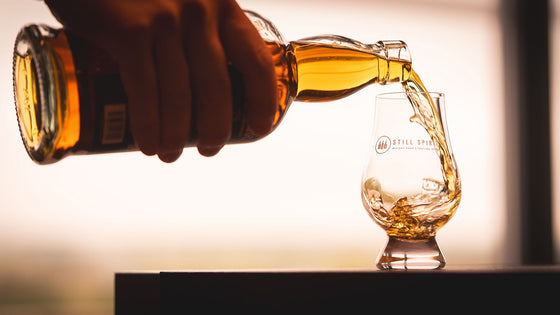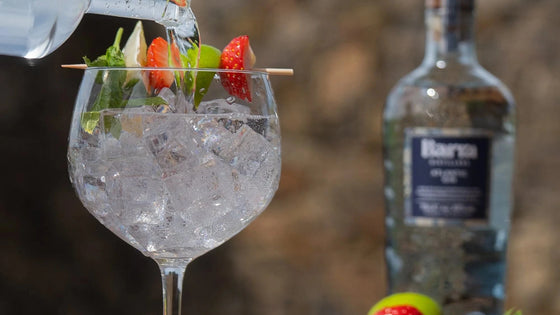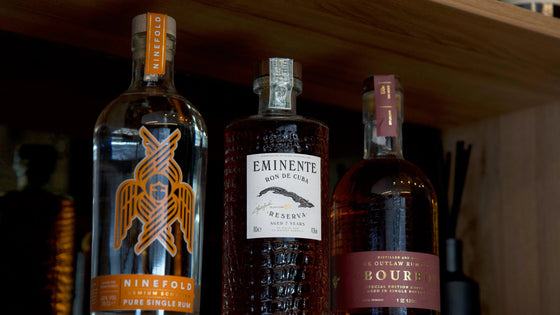For whisky beginners - or even committed enthusiasts - some Scotch whisky terms and phrases can be hard to understand, or even downright confusing. Take, for example, single malt whisky – what exactly is it, and how does it differ from single cask whisky? What is non-age statement whisky? Or non-chill filtered whisky?
In this blog, we’ll attempt to highlight some of the key terms and phrases you might encounter on a Scotch whisky label or in a product description. By uncovering what these terms really mean, we aim to help you make informed decisions with your purchases and navigate the world of Scotch whisky with confidence - one term at a time!
Let’s dive in.
Single Malt Whisky
Single malt whisky is made from 100% malted barley, distilled in a traditional copper pot still, and is the product of just one distillery.
Blended Whisky
Blended Scotch whisky is defined as a blend of one or more single malt whiskies with one or more grain whiskies.
Blended Malt Whisky
Not to be confused with blended whisky, blended malt whisky is a blend of malt whiskies from different distilleries.
Single Grain Whisky
Single grain whisky is produced from a combination of grains, typically including malted barley, corn, rye, and wheat. It is distilled using a continuous still and crafted entirely at a single distillery.
Blended Grain Whisky
Blended grain whisky is typically crafted by combining grain whiskies sourced from two or more distilleries.
Single Cask Whisky
If a whisky is described as ‘single cask’, it means that it has been bottled directly from one solitary cask from a distillery, so is untouched by the usual process of vatting or blending. This is in contrast to single malt whisky which is a blend of multiple casks of malt whisky across many years from the same distillery.
Cask Strength Whisky
The term ‘cask strength’ refers to any whisky which is bottled from the cask without any dilution with water. This unaltered state preserves the unique flavours, mouthfeel, and essence of each cask while retaining the natural alcohol content, typically ranging from 50-65% ABV.
Age Statement Whisky
An age statement whisky has its age displayed clearly on the label. Age statement whiskies have been vatted from multiple casks of varying ages. By law, the age stated must indicate the age of the youngest whisky in the bottle. So, if the label states that a whisky is 12 years old, it may actually be made up of whiskies that are many years older.
Non-Age Statement Whisky
Conversely, a non-age statement whisky does not disclose the age of the malt inside. This is wholly due to the law regarding age statement whiskies (see above). For instance, a master blender can customise the expression they want, perhaps using a 30-year-old whisky with a 5-year-old whisky, without having to state ‘5-Years-Old’ on the bottle.
First Fill
You may see the expression ‘first fill’, perhaps in the phrase, ‘matured in first fill ex-bourbon barrels’. The term ‘first fill’ refers to the fill history of the cask. Almost all Scotch whisky is matured in casks that have previously held bourbon or sherry, so if it is the first time the cask has been used specifically to mature Scotch whisky, then the cask is referred to as a ‘first fill’ cask. Once it’s reused, it’s known as a ‘Second Fill’ or ‘Refill’ cask.
Finishing
Sometimes the whisky label might say, for example, ‘finished in Oloroso sherry casks’. Finishing is a process where the matured whisky is transferred for a short amount of time – usually between six and 24 months - to a cask of a different origin for a secondary maturation period. This method enhances the whisky by imparting additional flavours and colours.
Sherry Cask
Sherry casks or ‘butts’ are commonly used to mature or finish Scotch whisky, often giving the malt a spicy, nutty or fruity flavour profile. Butts are typically made in cooperages and then sent to Jerez in southern Spain for seasoning, with sherry varieties such as Oloroso, Fino, and Pedro Ximénez (PX) before being shipped to Scotland, in a process that usually takes up to two years.
Double Cask
The term ‘double cask’ can describe two slightly different processes. Firstly, the term ‘double cask’ is often used as another term for ‘finishing’ (see above). Alternatively, it can be used to indicate that the whisky has been fully matured in two separate cask types – usually bourbon and sherry - for an equal length of time before being vatted or ‘married’ together to make the final product.
Non-Chill Filtered
You may notice a whisky label with the term ‘non-chill filtered’. Chill filtering is a process whereby the whisky is rapidly chilled to around -4°C before being filtered to remove fatty acids, esters and proteins. This method prevents the whisky from becoming cloudy when exposed to low temperatures during storage or transportation, ensuring its appearance always remains clear.
Many producers are opposed to chill filtering, believing the process to affect the flavour and mouthfeel of the whisky, so will proudly claim this on the label of their bottles.
We hope this guide has been helpful!
At Still Spirit you’ll find a wide range of Scotch whisky - single malt whiskies, blended whiskies, single cask whiskies, age statement and non-age statement Scotch whiskies.









 What Goes Well with Whisky?...
What Goes Well with Whisky?...
 The Best 18 Year Old Whiski...
The Best 18 Year Old Whiski...
 Whisky Storage Secrets You ...
Whisky Storage Secrets You ...






